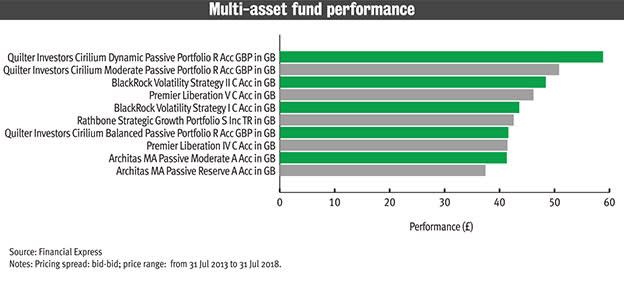Direct multi-asset investing allows us to better implement our views on global markets, ensuring we take on the risks we want to without a fund manager below us in the chain adding a few extra. This is especially important for any manager trying to target a certain risk-adjusted return.
Single-strategy managers see the world in a completely different light to absolute return managers: they are judging risk and themselves against a benchmark or peer group. This can cause some headaches for multi-managers.
Delegating your investment process to managers with different aims and views of the world waters down both the strategy and potential returns.
David Coombs is head of multi-asset investments at Rathbone Unit Trust Management
In favour of multi-manager investing: Gary Potter, co-head of multi-manager at BMO Global Asset Management
The words ‘multi-asset’ seem to us to be the two words that are used most commonly these days by wealth management providers and commentators to describe what they perhaps believe to be a new way of providing outsourced investment solutions, as distinct from ‘multi-manager’ which the same observers often interpret as a more traditional approach.
In some cases, the successful use of the words ‘multi-asset’ is undoubtedly a triumph of marketing concept over substance, or indeed results. But a fair assessment would point to some subtle differences which need clarification.
Although we are, and indeed have been ‘multi-asset’ managers for all of our team’s existence over 22 years, our nine strong multi-manager team is primarily responsible for managing 10 multi-manager fund-of-funds, and there is a clue in the narrative.
Perhaps obviously, the fund-of-fund structure gives the game away in that the guiding principle is that they are built by largely outsourcing to the best investment management talent that can be found from a primarily bottom-up perspective, principally through collective investment vehicles, which is not necessarily the starting point for your typical multi-asset manager.#
Yes, they can use collectives on occasion, but would also claim to invest, among others, in direct securities, instruments, factor or style based investments or, more simplistically, individual fixed income securities or direct equities, with one of the key drivers being to reduce the cost of creating a client solution, and that motive can not obviously be criticised.
Both approaches seek to provide a one-stop solution for investors while targeting specific outcomes based on differing levels of risk tolerance, capital growth and income needs.
Both equally argue the benefits of portfolio diversification in a world where the numberof investment strategies continues to expand. But perhaps one of the key differences is the greater focus on macroeconomic and market drivers to asset allocation with multi-asset and a greater focus on bottom-up manager selection with the more traditional fund-of-funds, as a generalisation.






